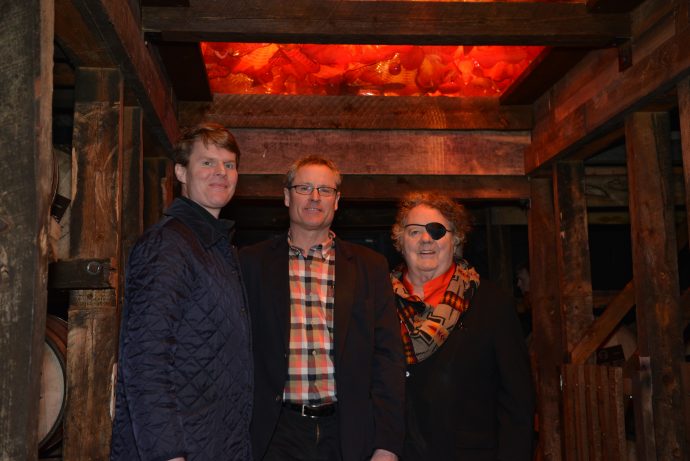In the beautiful and bucolic setting that is Kentucky, where horses and history abound, where people address you as “sir” or “ma’am” and really mean it, where social courtesies are paramount and instilling manners in children is as expected as nourishing and clothing them, bourbon is booming.
The bourbon industry was alive and well for decades, if not centuries, but the current growth of bourbon sales is impressive. They have doubled in the last decade and it is anticipated will double again in the next decade, if not sooner. Recently, there have been more than $225 million in regional distillery capital improvements and expansions. In 1999, bourbon producers got together and created the bourbon trail modeled after Napa and Sonoma wine trails and Scotland’s Scotch whisky trail. In 2007, the United States Senate declared bourbon to be “America’s native spirit.” Bourbon production has been around since American Revolutionary times but “small batch,” “single barrel” and artisanal producers are fueling the growth of the entire industry.
The rules for bourbon production are rather simple. The mash, which is the fermenting product that becomes distilled into whisky, must be at least 51 percent derived from corn. It must be aged for at least two years in new and charred oak barrels, and no artificial colors or flavors can be added. And it must be bottled between 80 and 160 proof, although most bourbons are bottled between 80 and 130 proof. Barrels can be used only once for bourbon production. The barrel aging process gives 100 percent of the color and 70 percent of the flavor.
Rob Samuels, the current CEO of Maker’s Mark bourbon, said, “A couple of decades ago bourbon makers could not imagine people from New York and Boston making the trip to Kentucky to taste their whisky.” Today, the bourbon trail is a very popular destination. Last year Maker’s Mark welcomed more than 120,000 people to their visitors’ center for a tour of the grounds and facilities, an explanation of the production process followed by a guided tasting.
On my recent trip to Maker’s Mark, Rob told me, “For generations, the T.W. Samuels distillery made whisky – bad whisky. My grandfather, Bill, failed as a banker, then failed as an automotive dealer. His wife Margie suggested he pick up the family trade of whisky production and take it to a higher level. Go for quality, not quantity.” So Bill burned the family recipe and set out to create a handmade, handcrafted whisky which would be soft, full-flavored and well-made.”
He began by increasing the percentage of corn in the mash. He also used winter wheat rather than the more customary rye. Think of the difference between rye and wheat bread. The rye imparts a spicy bite to the whisky that Bill Samuels was trying to avoid. With no training in marketing, his wife designed the bottle, the label and insisted on the hand-dipped, dripping signature red wax that seals every bottle of Maker’s Mark. Rob told me, “The Maker’s Mark label is the only whisky label in the world designed by a woman.” In 1953 they bought 700 acres where they still produce all their whisky. And Margie insisted on rolling some of the profits back into the property to make it “a place people would want to visit.”
Since its inception, Maker’s Mark employs small batch production methods, making just 19 barrels per run. Some producers make as many as 250 barrels per batch. The rickhouse, where the bourbon is barrel-aged, is several stories high. The barrels near the roof age considerably quicker than the ground-floor barrels. Other producers blend the final product to try to get a consistently predictable flavor profile. Maker’s Mark rotates all of the barrels from high to middle to low throughout the six-year, five-month average aging process. This very labor intensive approach gives a barrel-to-barrel flavor consistency. Because of Kentucky’s very hot summers and very cold winters, one year of oak aging in Kentucky is equal to four years of Scotland’s oak aging. Rob told me, “A 5-year-old bourbon is equal to a 22-year-old Scotch”.
So how do you mark the celebrated history and 60th anniversary of Maker’s Mark? Rob commissioned Seattle-based glass artist Dale Chihuly to create a unique, backlit, hand-blown ceiling in the visitors’ center barrel-aging room. It takes very little light to bring out the rich golden tones of an oak aging room. A couple of light bulbs can do the trick. The Chihuly ceiling, made of 1,300 individual pieces and assembled on site employing colors to represent different aspects of the production, is thoroughly mesmerizing and breathtaking. Chihuly has his original pieces on display in The Metropolitan Museum of Art and has been a featured artist in the Musée du Louvre. This permanent display in Loretto, Ky., gives another compelling reason to visit Maker’s Mark. The Kentucky Derby, on the first Saturday in May, makes me think of bourbon. Look for the red wax seal. Make it a Maker’s!
Write me at doug@dougpaulding.com.


